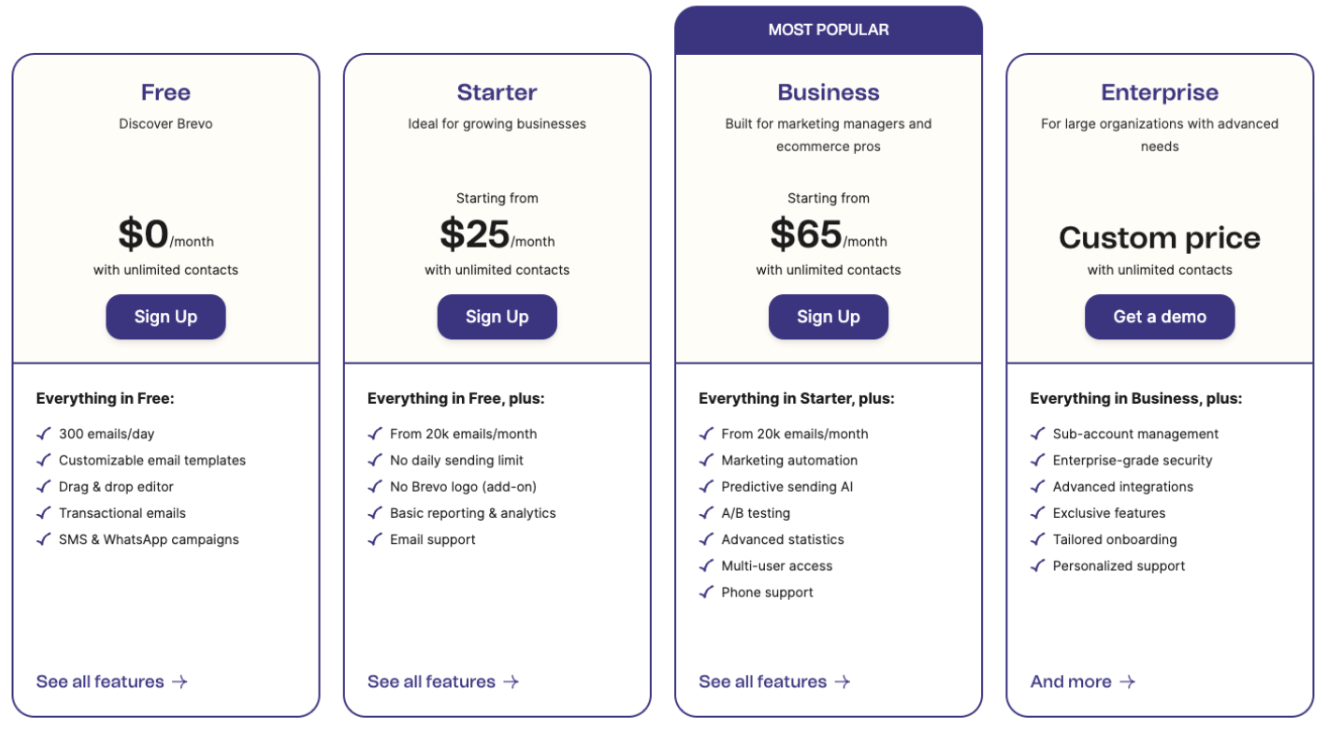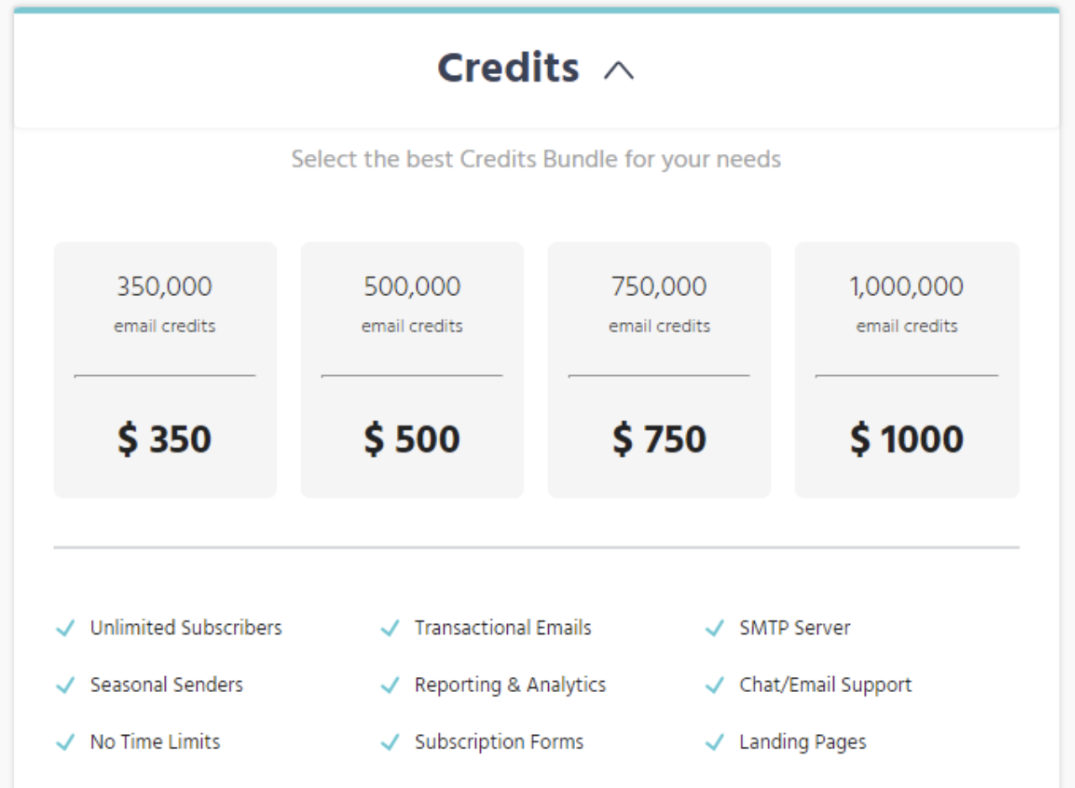Email marketing is a crucial aspect of any comprehensive digital marketing strategy. It’s a cost-effective way to reach prospects directly in their inbox.
When done right, email marketing can generate high ROI. According to research, for every $1 spent on it, businesses report a $36 return.
You don’t have to spend a lot of money on email marketing to reap high ROI. However, this begs the question: how much does email marketing cost exactly?
Many factors determine email campaign costs, including business size and marketing needs.
In this article, we’ll examine the various factors affecting these costs. These include the cost of email automation platforms and outsourcing copywriting and design functions to freelancers and agencies.
Let’s get started.
How much does email marketing cost?
Here’s a breakdown of the factors that affect the cost of email marketing:
- Platform: There are various email marketing platforms, each with different price points and features to cater to your unique business needs. The more advanced the features are, the more expensive they are likely to be.
- List size: Pricing can also depend on the size of your subscriber list. As your list grows, so does the cost of your email marketing efforts. Alternatively, some email marketing platforms may charge based on the number of emails sent per month or even the flat rate for the plan.
- Email design: Professional email designs can boost your email marketing efforts. That said, the cost will depend on whether you need an in-house designer, a freelancer, or an agency.
- Content creation: Persuasive and informative email copy is essential for engagement. Hiring an in-house writer may be associated with higher costs than hiring a freelancer, but you’ll get stability and consistency.
- Photoshoots: Certain email marketing campaigns, such as product promotions and branding campaigns, require original images. The price associated with hiring a photographer can further raise your costs.
Overview of email marketing platforms
Popular email marketing platforms include ActiveCampaign, Omnisend, and tinyEmail. Here’s how they compare in the market.
ActiveCampaign: Best for B2B companies
ActiveCampaign is a comprehensive email marketing platform suitable for large enterprises. It’s typically used by businesses looking for a versatile tool with email marketing, CRM, and sales automation features.
For email marketing, ActiveCampaign provides advanced automation, segmentation, reporting, and more. It also has a user-friendly interface.
Since it’s rich in advanced features, learning to use ActiveCampaign may take time. ActiveCampaign offers email and chat support and an extensive knowledge base to remedy this.
About ActiveCampaign pricing, please read here.
Omnisend: Best for ecommerce
Omnisend prides itself on being an easy-to-use email marketing platform for ecommerce businesses. It’s famous for its omnichannel capabilities, great customer support, and robust automation.
Its functionality includes email, SMS, and push notifications. It’s great for ecommerce businesses looking to engage customers across multiple channels.
Omnisend features an intuitive interface. It also has prebuilt automation workflows and customizable email marketing templates for multiple occasions. Using Omnisend, you can save money on email designers because this platform offers decent-looking templates for email campaigns.
It provides 24/7 email and live chat customer support for all users, regardless of their plan tier. It also offers a comprehensive help center with a wealth of resources. Overall, we find Omnisend as one of the best email solutions because it’s affordable and offers multiple advanced features.
tinyEmail: Best for email marketing beginners
This affordable and easy-to-use email marketing platform is great for small businesses and startups. It offers essential email marketing tools, including email templates, list management, and basic automation.
tinyEmail offers 24/5 email and chat support. Although its DIY resources are limited compared to other platforms, its simplicity may reduce the need for technical help.
Pricing models explained
Email marketing platforms typically offer various pricing models. Here’s an overview of the top three pricing models:
Subscription-based on database size
In this pricing model, the plan cost depends on the size of your subscriber list. Here, the larger your contact list, the higher your email marketing cost.
Sometimes, it also includes a cap on the number of emails you can send.
For instance, Omnisend lets choose your contact list size within each plan. Consequently, the price changes as your list size grows. Here’s what that looks like.
 Image via Omnisend
Image via Omnisend
Additionally, you’ll have access to all the features of your subscription package.
Please find an in-depth analysis of Omnisend pricing here.
The latest Omnisend review is available here.
Subscription-based on email sends
With this model, your subscription cost is determined by the monthly email volume you send. Your monthly or annual costs will increase as the number of emails you send goes up.
In this model, the number of contacts on your list doesn’t matter. That’s why it suits businesses with a large subscriber base but don’t send emails regularly. It’s also great for those who are changing email volumes.
Brevo offers this pricing model as shown below.
 Image via Brevo
Image via Brevo
Some platforms may offer additional features based on your subscription tier.
The latest Brevo review is available here.
Pay-as-you-go
In this pricing model, businesses purchase email credits or tokens to send a specific number of emails. You’ll typically buy these credits in bundles.
Buying credit bundles offers flexibility. Businesses can use these credits to send emails without committing to a recurring subscription.
Also, businesses can avoid long-term cost commitments, such as annual packages.
Moosend offers a pay-as-you-go pricing model, as you can see below.
 Image via Moosend
Image via Moosend
Each pricing model has its advantages, catering to different types of businesses. For instance, subscription-based models provide stability. They’re suitable for companies with regular email marketing needs.
On the other hand, pay-as-you-go plans offer more flexibility. They’re ideal for businesses that send seasonal email marketing campaigns.
The latest Moosend review is available here.
Hidden costs and add-ons
In addition to the base price for email platforms, some extra costs come with email marketing. Here are the common ones to look out for:
- Integration: Email marketing platforms offer integrations with third-party tools. These tools include CRM systems, ecommerce platforms, and social media. While some plans already include integration costs, others may not.
- Custom API access: Some businesses require custom API access to integrate their email marketing platform with other systems or tools. This lets them build custom integrations, automate workflows, and communicate with systems. However, custom API access may incur additional costs, such as setup fees, usage fees, or ongoing maintenance costs.
- Advanced automation: Most email marketing platforms offer basic automation features. However, advanced automation features like conditional logic may cost extra.
- Enhanced analytics and reporting: Advanced analytics is sometimes necessary to gain deep insights. Add-ons, such as custom reports and predictive analytics, may incur additional costs. Before signing up for a certain platform, you can ask support questions and figure everything out.
- Dedicated customer support: This doesn’t technically come at an extra cost. However, you’d need to subscribe to higher-tier plans to access this service. This can include a dedicated account manager and priority support.
List building and management costs
How much does an email marketing campaign cost to grow and maintain your email list? Here’s the answer.
Building a quality email list
Investing in organic list-building strategies that maintain a high-quality email list is important. For this, you can use strategies like:
- Placing opt-in forms strategically on your website: Most email marketing platforms provide this feature, so you won’t incur extra costs.
- Creating high-quality content, such as blog posts, ebooks, or guides: Ensure they address your target audience’s pain points. The cost depends on whether you create the content in-house or outsource it to freelancers or agencies.
- Encouraging social media followers to subscribe to your email: Use exclusive offers or content. The average cost for social media advertising is $15 to $20 per day or $450 to $6,000 per month.
- Hosting webinars, events, or workshops that require registration to participate: To host a webinar, you’ll need access to webinar platforms that cost around $150 to $500 per month. You might also need to market the event. The marketing cost depends on what type of marketing you’ll be doing.
It’s crucial to note that buying email lists can pose a significant risk to your business. For starters, it’s against the law due to data protection regulations like GDPR and CAN-SPAM.
Also, bought lists are often of low quality. They can harm your sender’s reputation and lower your deliverability. Simply put, they will kill your email marketing even before you start it.
Email list maintenance
You’ll need to clean your email list regularly to maintain its health and relevance. This helps improve engagement, deliverability, and the overall effectiveness of your campaigns.
List hygiene involves removing invalid, inactive, or unengaged email addresses from your subscriber list. This helps keep your deliverability rates high.
List cleaning will likely cost you money, depending on your list size. Platforms like Omnisend and MailerLite offer this service in-house. MailerLite provides the service as an add-on called MailerCheck. Users can buy credits for it, as shown below.
 Image via MailerLite
Image via MailerLite
Campaign design and development costs
The design of your email campaign also determines the cost of your email marketing. This depends on whether you choose custom or predesigned templates.
Designing impactful emails
Predesigned templates are generally cheaper than custom designs. Most email marketing platforms offer predesigned templates. This cost is often included in your overall subscription fees.
This means you’ll save heavily on cost if you choose a platform with modern-looking designs. Other benefits of predesigned include:
- They’re quick and easy to use
- You’ll get a variety of designs for inspiration
- They are optimized for mobile
Custom designs, on the other hand, typically cost more. This is because you’ll need to hire a graphic designer or agency to build templates tailored to your brand. The costs will vary depending on the complexity of the design and the freelancer’s level of expertise.
For instance, freelance designers can charge between $25 to $150 per hour for a newsletter design.
There can also be extra costs or revisions during the design process. Though costly, custom designs have benefits such as:
- They ensure brand consistency
- They give your campaigns a unique look and feel
- They cater to your specific audience
- You have full control over your designs
Email development and responsiveness
Making sure your email designs are responsive on different devices is crucial. It optimizes user experience and engagement. This is especially true now that more people access emails on mobile devices than ever before.
If you use email templates from an email service provider’s library, you can save on testing emails because email providers usually guarantee their email templates. They are already responsive.
However, if you choose custom designs and custom templates, it will cost you significantly more.
Responsive email design involves coding HTML and CSS that adapts to different screen sizes and devices. This includes using media queries, fluid layouts, and scalable images to ensure proper device rendering.
You may also need to pay for email testing tools. Besides financial implications, developing responsive emails from scratch also requires lots of time.
Email content creation costs
Depending on your needs and budget, you can write compelling email copy in-house or outsource it to freelancers or agencies.
Hiring a professional copywriter has many benefits. They can ensure that your email content is engaging, persuasive, and aligned with your brand voice.
The costs for professional copywriting services can depend on the following factors:
- Scope of work
- Experience level
- Complexity of the project
Copywriters can charge per project, per hour, or on a retainer basis. Rates can range from $50 to $200 per email based on their experience and your requirements. Flat fees for specific projects typically start at $100 and increase based on complexity and length.
Copywriters may also offer package deals or discounts for ongoing work or larger projects.
You may also hire professional designers to create graphics, templates, and layouts for visual appeal.
Freelance graphic designers charge an average rate of $50 to $150 per hour. Some may charge a $200 flat fee. This rate could go higher depending on project complexity and the freelancer’s level of experience.
A lot of marketers save money on freelancers and use generative AI tools. That’s why choosing an email platform with integrated AI tools can be a big help.
Email marketing agency pricing
Hiring an email marketing agency may be the best option for some businesses.
When to consider an email marketing agency
- If you have limited expertise in email marketing, you can consider hiring an agency. Agencies have many years of experience in building effective campaigns for various types of businesses.
- Scalability can be a problem during rapid growth. In-house teams may struggle to handle the workload. In this case, an agency can provide the needed resources to allow your business to scale its efforts.
- Agencies often have access to advanced email marketing tools and analytics. These resources may be too costly for some businesses.
- External agencies bring fresh views and ideas. They can give you a competitive edge.
Overall, you must assess your needs. Consider if you should hire an email marketing agency or keep your in-house team.
Cost factors in agency pricing
The pricing of email marketing agency services can vary based on several factors. Here are some top ones to consider:
- Strategy development: Agencies tailor your marketing strategy to fit your business’s goals, target audience, and industry. They’ll determine the cost based on the scope of strategy development.
- Campaign management: This involves daily execution and improvement of your email plan. Here, agencies base pricing on items like the number of campaigns managed and the frequency of emails sent.
- Content creation: This involves creating compelling text, graphics, and other media for email campaigns. Pricing depends on the type of content, level of customization, level of expertise, and other factors.
- Analytics services: These include tracking and reporting key performance metrics to measure performance. Here, pricing may be based on the depth of analytics provided and the frequency of reporting.
Typical pricing models
Here are the three most common pricing structures used by agencies:
- Monthly retainers: Clients pay a fixed monthly fee to retain the agency’s services. Agencies typically charge monthly retainers for ongoing projects and bundled services.
- Project-based pricing: Clients pay a one-time fee for a specific email marketing project or deliverable. This structure is ideal for businesses looking to hire an agency for a specific project or to try out agency services.
- Performance-based fees: Here, the amount paid to the agency is based on the results they achieve. This includes click-through rates, conversion rates, or revenue generated. You may have a base pay, on top of which performance-based incentives can be added.
Calculating ROI with agency partners
How do you know if it’s cost-effective to hire an email marketing agency?
You can do this by measuring your return on investment (ROI). Here’s a step-by-step guide:
- First, establish clear objectives and key performance indicators. These include increased sales, higher engagement rates, or improved customer retention.
- Then, track and analyze relevant metrics before and after partnering with the agency. Calculate the total costs of hiring the agency, including monthly retainers and other related fees.
- Finally, compare these costs to the revenue increase or other outcomes linked to the agency’s efforts.
Ultimately, a positive ROI shows that your investment in an agency is worth it.
How much does email marketing cost per month?
So far, email marketing costs can vary widely depending on your marketing needs.
Some email marketing automation platforms offer free plans with basic features. This is great for beginners or small businesses on a budget.
Top platforms offer starting plans that range from roughly $10 to $20 per month for a list of 500 contacts. The higher the cost, the more subscribers you have and the more features you need.
Larger businesses have more complex email marketing needs and email lists with over 100k contacts. They may choose enterprise-level plans that can cost $500 to $1,500 or more per month.
Lastly, hiring an email marketing agency involves additional costs beyond your email marketing tool. For example, agencies may charge $250 to $500 for each email. They may also have a monthly retainer, which normally costs anywhere from $2,000 to $7,500. Alternatively, agencies may charge $1,000 or more per project.
Email marketing cost: Wrap-up
So, how much does email marketing cost? It depends on many factors. These include the size of your business, your budget, your email list, and the number of emails you plan to send.
Larger businesses with bigger budgets will choose advanced email marketing platforms. This will cost more than the simpler ones that are suited for smaller businesses.
Hiring an agency to design your campaigns and create copy costs more than using in-house talent.
Overall, your costs can range from tens to thousands per month, depending on the nature of your business. When budgeting for your marketing, be sure to measure your costs against your returns.
